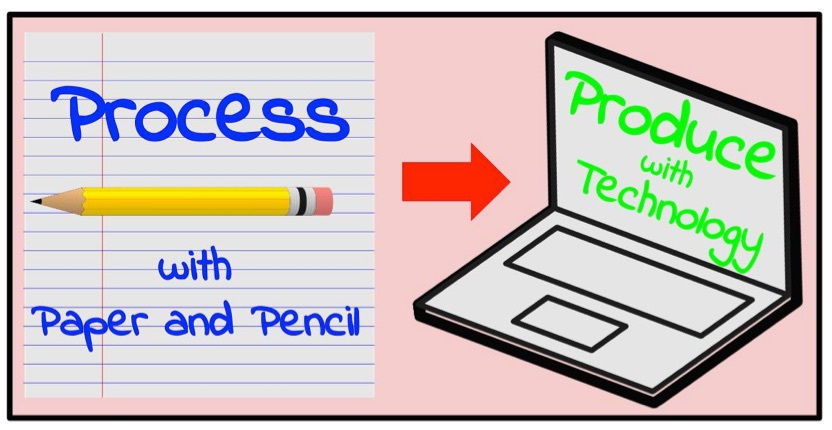Process With Paper and Pencil, Produce With Technology
- Adam Slaton
- Apr 29, 2016
- 3 min read
I sat on a Q&A teacher panel a few weeks back during a high school staff meeting about the upcoming expansion of our school’s Bring Your Own Device (BYOD) program. A few teachers questioned, the same question that has come along at every step of our school’s journey to a full 6-12 implementation of BYOD, what is the balance between paper and pencil notebooks and the use of laptops. It is a great question, one that I know has been asked and pondered across the education world as more schools move to BYOD or other one-to-one programs. Knowing what we know, what is the right balance between handwriting and a computer?

Process with Paper and Pencil, and Produce with Technology
The compass that guides my direction regarding the paper/pencil vs. technology debate is students should process information using paper and pencil and then demonstrate their knowledge, or produce, using technology. Like most education ideas, pedagogy, and trends, I use this as a general guideline and not a set rule.
Why?
According to Can Handwriting Make You Smarter, written by Lee Hotz in the Wall Street Journal, recent studies have shown measurable benefits to writing notes by hand as opposed to notes typed on a laptop. The article covers both research done at Harvard and University of Nebraska – Lincoln, as well as earlier studies published by Pam Mueller of Princeton and Daniel Oppenheimer of UCLA. While the studies draw a variety of specific conclusions, one overarching theme points to the fact that learners learn better when they process information, and that learners process better when they write by hand.
Process and Produce In Action
I offer my students a variety of ways to access information. Students experience, discuss, watch, think, read, listen, and draw just to name a few. Along with this, in order to process what they are learning, they always take some form of notes. I teach a variety of reading strategies that involve note taking, such as using the Gist Strategy or Split Screen Notes. When learning new vocabulary words, after I define and describe the terms, students write the definitions in their own words and add a visual representation or drawing to go along with it. Students will take notes from direct instruction, whether it be during a whole-class discussion or a flipped-style video presentation. I incorporate quick writes, brain storming lists, idea webs, drawings, questions, etc. that are all hand-written, so that students take the time to process the information.
When it comes time to produce content, or to demonstrate knowledge and apply skills, I typically turn to technology. There are soooo many great reasons to call upon technology: better engagement, better feedback, larger and authentic audiences, better collaboration, and of course for the sake of learning how to use tech tools that are the foundation of our 21st century world. Technology allows students to enhance and transform the way they can show off what they know and what they can do.
You want better engagement, have your students make a movie trailer incorporating plot structure instead of filling out a “story mountain” worksheet. Use ‘Suggesting Mode’ or add voice comments to student work in Google Docs to enhance feedback and turn written assignments into learning experiences. Publish student written work, videos, or posters to a class blog to celebrate their ideas to a wider audience instead of just hanging it out in hall. Encourage students to use Google Slides to create a presentation, allowing them to simultaneously work together and to collaborate in and outside of class. Or embrace the fact that info-graphics are a legitimate 21st century form of communication and students need the technical skills to edit and format images to convey ideas.
Exceptions to the Rule
Like I stated above, there are always exceptions to the rule. I have found uses of technology that enhance how students can process ideas. For example, I have students use Google Drawings to annotate maps because it deepens their ability to process and make meaning of how humans interact with their physical environment. There are also times my students cut and paste, by actually cutting and pasting with scissors and glue, to make posters. It could be because I’m “old fashion” or that I secretly believe in the inevitability of a zombie apocalypse void of modern technology and that students should still have the dexterity to cut, glue, color, and draw, but I like to dust off the old art supply box and break out the colored construction paper once in a while.
When it comes down to it, I will evaluate each learning goal, each unit and lesson, and use the tools I think will fit best. However, my general guiding principle is use handwriting to process and digital tools to create and demonstrate.
What do you think? How do you balance technology and handwriting, laptops and notebooks?



